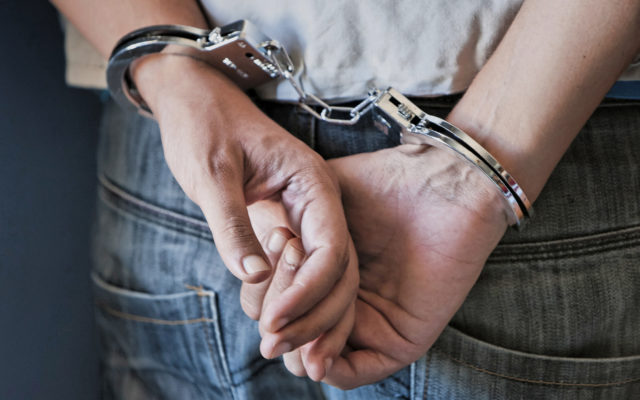Astronauts prepare for launch to International Space Station

After an overnight launch readiness review, NASA and SpaceX early Tuesday cleared a Falcon 9 rocket and Crew Dragon spacecraft for blastoff Thursday on a commercial flight to ferry a three-man, one-woman crew to the International Space Station.
Liftoff from historic pad 39A at the Kennedy Space Center will mark only the third piloted flight to orbit from U.S. soil since the space shuttle’s retirement 10 years ago, and the first featuring a previously flown Crew Dragon capsule and a “used” first stage booster.
A series of in-depth reviews, culminating in Tuesday’s Launch Readiness Review, “have been extremely thorough, especially with a refurbished Falcon and Dragon. We’re very convinced that it’s safe to fly,” said Norm Knight, deputy manager of flight operations at the Johnson Space Center in Houston.
“Safety has been number one in all these reviews, and that’s the way it should be. This business of human spaceflight is unforgiving,” he told reporters in a virtual news conference. “It’s the vigilance from the teams that guarantee that continued safety, and it was definitely present in these reviews this week.”
The mission’s all-veteran crew — commander Shane Kimbrough, Megan McArthur, European Space Agency astronaut Thomas Pesquet and Japanese flier Akihiko Hoshide — strapped in for a dress rehearsal countdown Sunday. If all goes well, they’ll blast off for real at 6:11 a.m. ET on Thursday.
“The crew is getting an opportunity today to get more briefings, get prepped for launch, spend some time with their family,” Knight said. “They get a little bit of downtime tomorrow, waking up very early on Thursday morning for the launch.”
Forecasters predict an 80% chance of good weather at the launch site. But brisk winds and possibly rough seas are a concern along the ship’s northeasterly path over the Atlantic Ocean where the crew could be forced to attempt an emergency splashdown in an abort.
“It’s not just about launch (weather) when we’re launching crew,” said Benji Reed, director of human spaceflight for SpaceX. “We have to worry about the entire ascent trajectory, because if something goes wrong, we want Dragon to be able to escape off of the rocket. And that means they have to be able to come down in the ocean at all points along that potential escape.
“We’re looking at winds and wave height and lightning, all kinds of things to make sure it’s right. … While we’re aiming for Thursday at 6:11 Eastern, we’ll watch the weather. If we need to, we’ll move to that next day on Friday.”
A launch on Friday would be targeted for 5:49 a.m. The next opportunities after that, based on space station rendezvous requirements, are Monday and Tuesday.
The Crew Dragon capsule launching this week first flew in May 2020 when it carried two astronauts, Douglas Hurley and Robert Behnken — McArthur’s husband — to the space station in SpaceX’s first piloted flight to orbit.
For the capsule’s second flight this week, McArthur will strap into the same seat her husband used last year. The first stage of the crew’s Falcon 9 flew last November to help launch the four SpaceX Crew-1 astronauts Kimbrough and company — Crew-2 — are replacing aboard the space station.
“Flying on reused vehicles, on flight-proven vehicles is key towards greater flight reliability and lowering the cost of access to space, which is ultimately what helps us make life multiplanetary,” Reed said. “So this is a great accomplishment.”
Assuming an on-time launch Thursday, the Crew Dragon will execute an automated, hands-off rendezvous with the International Space Station, approaching from behind and below before moving in for docking at the Harmony module’s forward port at 5:30 a.m.
Their arrival will boost the station crew to 11, just two shy of a record set during two shuttle visits.
The four Crew-2 astronauts will join Oleg Novitskiy, Pyotr Dubrov and NASA astronaut Mark Vande Hei, launched to the lab April 9 aboard a Russian Soyuz spacecraft, and the four Crew-1 astronauts launch last November: Michael Hopkins, Victor Glover, Shannon Walker and Japanese astronaut Soichi Noguchi.
After a six-day handover to familiarize their replacements with station operations, Hopkins and his crewmates will strap into their own Crew Dragon, undock from the Harmony module’s space-facing port and head for re-entry and splashdown in the Gulf of Mexico south of Tallahassee, Florida, around 12:40 p.m. on April 28.
“It’s important always to be thinking about the crew that we’ll be bringing home,” Reed said. “All of our recovery crews are ready. They also have been training and reviewing and practicing and checking all of their hardware, and they’re ready (the crew) to come home.”



